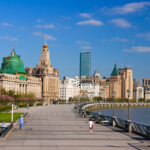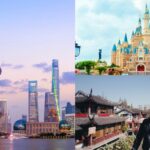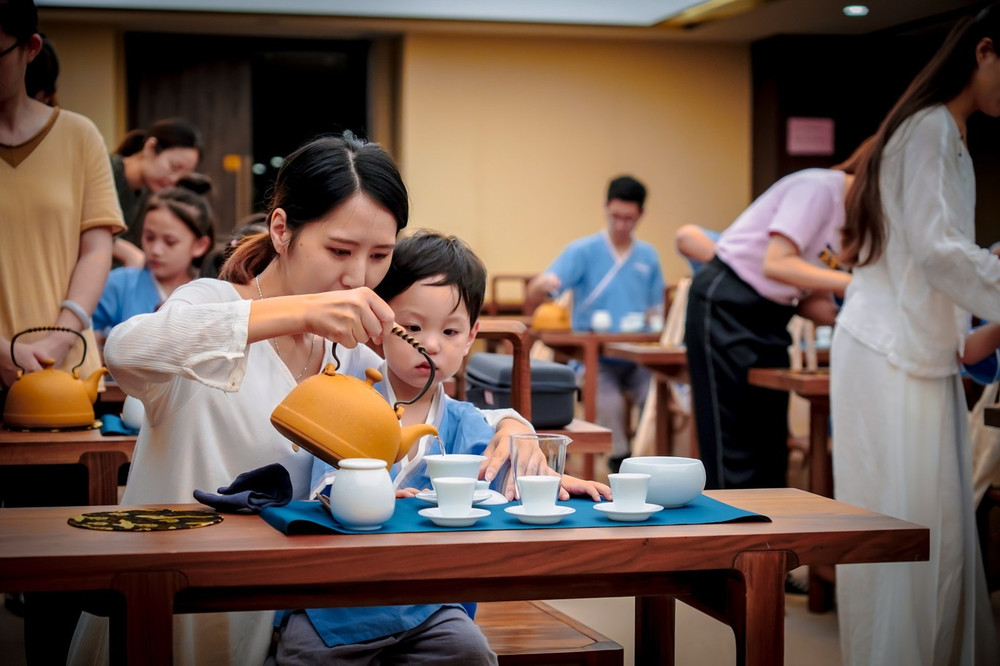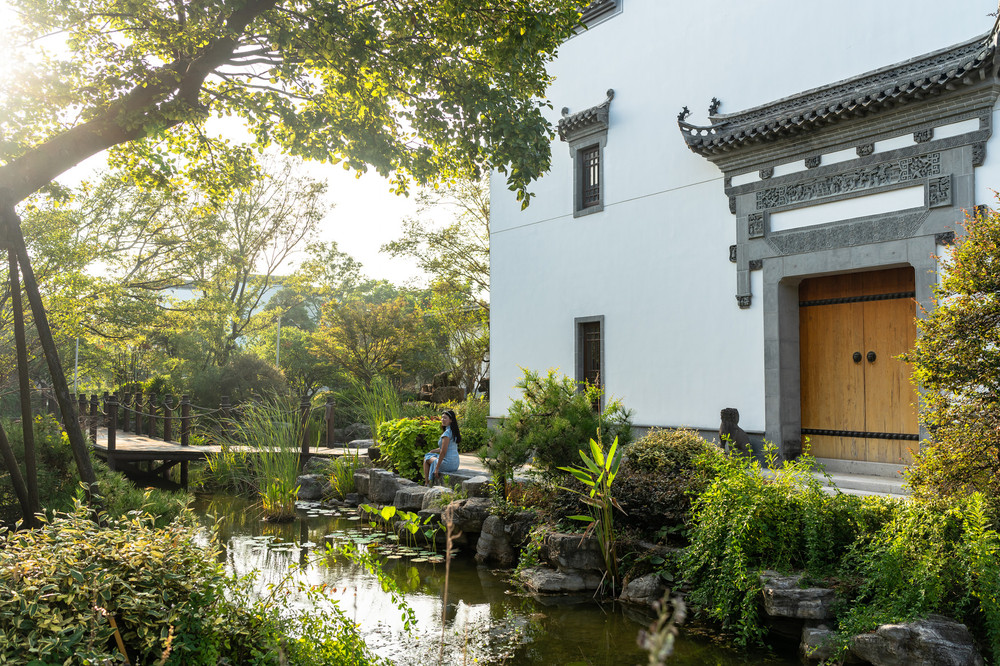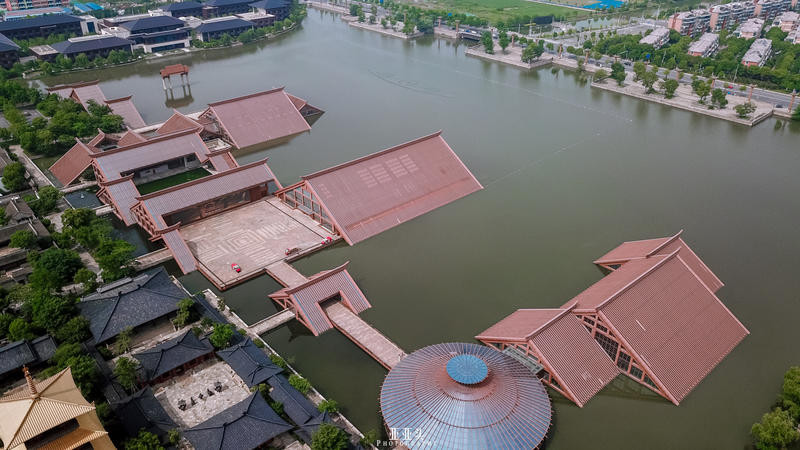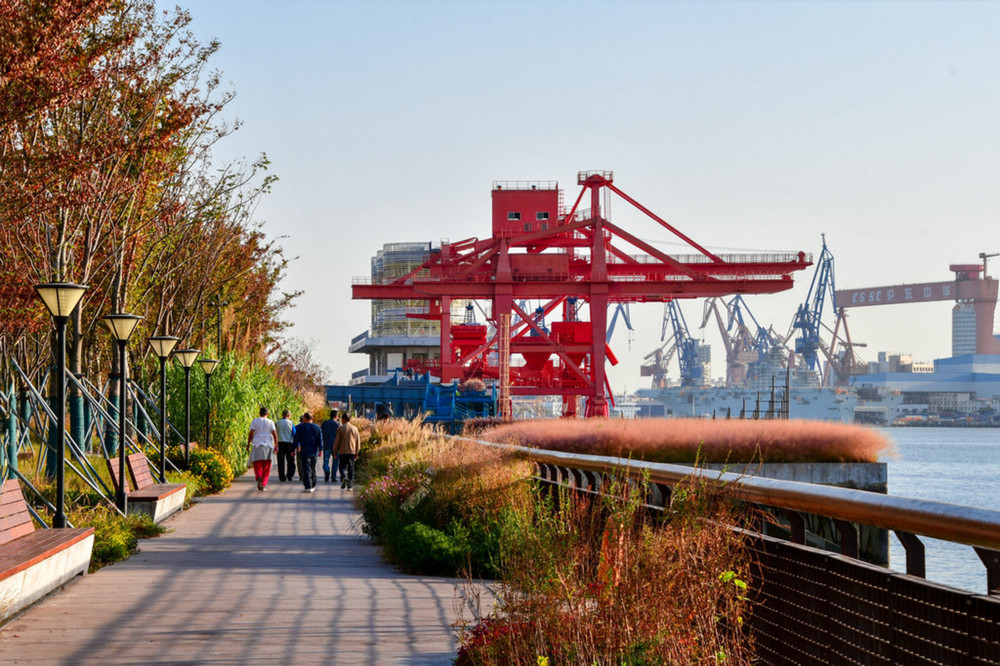Discover the hidden gems of Shanghai’s suburbs, a city teeming with culture, art, architecture, and history. This guide will take you through the lesser-known yet fascinating attractions that make up the rich tapestry of Shanghai’s outskirts.
1. Zhujiajiao Ancient Town Scenic Area: This ancient town boasts a history dating back 1700 years, with signs of civilization dating back to 5000 years ago. Located south of the Yangtze River, Zhujiajiao is a charming suburb with nine long streets running along the river, lined with buildings from the Ming and Qing dynasties. The area spans 48 square kilometers and features 36 bridges, including the historic Fangsheng Bridge built in 1571. The Great North Street is home to a thousand shops, and the KeZhi garden and Wang Chang memorial hall are must-visit sites for their architectural beauty. Stroll along the well-paved streets to immerse yourself in the city’s architecture and culture. Tour boats are available for a scenic journey along the river, with prices starting at Yuan 80 for a short tour and Yuan 150 for a longer exploration. 2. Gucun Park: Situated in Baoshan district at 1 Huandao Road, 4788, Hutai Road, Gucun Town, Gucun Park is a vast 430-hectare forest park that spans both sides of the river. It is part of Shanghai’s outer environmental engineering, designed to provide oxygen-rich spaces for people to connect with nature. The park is a haven for biodiversity and a testament to the city’s commitment to environmental sustainability. Shanghai, a city of 24 million on the estuary of Asia’s longest river, the Yangtze, is not only known for its modern development but also for its rich cultural heritage. The Huangpu River, a tributary of the Yangtze, flows through the city, adding to its charm. The Shanghai skyline, with its numerous skyscrapers, ranks fifth in the world for the most skyscrapers. The iconic Shanghai Tower, standing at 632 meters, is the second tallest tower globally, surpassed only by Burj Dubai. Navigating the 2650 square kilometers of Shanghai can be daunting for newcomers, but each neighborhood is self-contained, making daily life accessible and enjoyable. This guide aims to help you explore the unique places of interest in each area of Shanghai’s suburbs. Continue your journey through Shanghai’s suburbs with visits to Zhaojialou Ancient Town, Sheshan National Forest Park, Shanghai Chenshan Botanical Garden, Fengjing Ancient Town, Xinchang Ancient Town, Thames Town, Shanghai Grand View Garden, and Xisha Wetland Park. Each location offers a unique glimpse into the city’s past and present, providing a comprehensive experience of Shanghai’s cultural and natural diversity.Discover the serenity and beauty of Shanghai’s outskirts with this guide to its hidden gems.
The park is a haven for nature lovers, offering a variety of attractions such as a forest park, gardens, walking paths, a water forest scenic area, children’s play area, a flower garden, a youth activity center, a health activity center, Yuelin lake water forest area, and a forest meadow. It’s a perfect blend of fun, entertainment, health, and children activities set amidst natural surroundings, encouraging outdoor exploration. The park caters to all age groups and is a must-visit destination. It also celebrates international folk arts while preserving the traditional industrial culture of Boashan. Don’t miss the fossil museum, which displays numerous ancient fossils. The park operates from 6:00 AM to 6:00 PM and features various food outlets, including a chocolate park where you can witness the entire production process.
Zhaojialou Ancient Town, listed as one of Shanghai’s four historic and cultural towns since 1991, is another highlight of our Shanghai Suburbs list. Nestled along the Xiaogang River, it’s often referred to as the Venice of China. The town has seen a rise in cafes, souvenir shops, bookshops, and trendy stores, drawing more tourists, especially the younger crowd. As you stroll through the town’s streets, you’ll encounter a diverse landscape at every turn. The distinct architecture from the Ming and Qing dynasties lines the water canal, and you can visit the Zhuxi garden, Humanities Art museum, Dianshan lake, Kai Kui peak, Qiaojie temple hall garden, and Yuanjin Zen hall within the scenic area. The town is also known for its delicacies, with straw bread and fresh bamboo shoots roast wheat being particularly popular.
Sheshan National Forest Park is an idyllic escape from the hustle and bustle of city life. It’s a hill park that offers a tranquil retreat amidst nature’s splendor. The park encompasses East and West Sheshan mountains, each with its own unique parks that attract tourists. West Sheshan Park features nine hills and man-made landscapes, including the Church of our Lady Sheshan, possibly the first church in southeast Asia, and an observatory. East Sheshan Park boasts rich biodiversity with 2000 plant species, 100 bird species, and numerous wild animals. It also includes a plant fossil forest, butterfly garden, and wonder stone cave. Recent additions to the park include a Sculpture Park, national bird park, dry land sleighs, forest hotel, and restaurant, enhancing the visitor experience and catering to recreational and culinary needs.
The park at 9142, Qingsong Road, Songshan district is open from 8:00 AM to 4:30 PM on all working days and from 8:30 AM to 4:30 PM on holidays.
5. Shanghai Chenshan Botanical Garden. This exquisite garden is located at 3888 Chenhua Road, Songjiang District and is open from 8:00 AM to 5:00 PM on all days. An adult ticket costs Yuan 60. Seniors between Yuan 60 and 65 years get a 15% discount, and those above 65 years are allowed free entry. Children between 6 and 18 years and students get tickets at 50% discount. The garden has 3 breathtaking glasshouses and 26 themed parks. It was opened to the public in 2010 and is a collaboration between the Chinese Academy of Sciences and Shanghai government. It promotes plant science and preserves regional fauna while providing a large lung space for the urbanized city. You can enjoy visiting the stunning conservatory with indoor gardens, desert greenhouses with cacti and succulents, and rare and exotic plant greenhouse. Apart from this, you should visit the Rose Gardens with around 500 types of plants, Aquatic Plant Garden with around 150 types, Quarry Garden which is an old quarry turned into a garden with a stunning landscape including a lake, Vegetable Garden made up of four sections and Rose and Medicinal Plants Garden which is another old garden converted into a useful plant garden. 6. Fengjing Ancient Town. This is a 1500-year-old historical town and one of the eight attractions in Shanghai city. It is like the Zhujiajiao ancient town. The suburb is full of Taoist temples. Its water bodies form a network that runs throughout the town and it has a big network of 52 bridges, some of which are still in use. The oldest bridge, Zhihe, has a 700-year history. This place is known as the gateway to the southwest and historically as the Wuyue town as it is at the intersection of the Wu and Yue Kingdoms. Now, it is a vibrant town retaining its ancient roots. There are many historical places to visit, some of which might need a ticket. This suburb is also known for its peasant art and many nice artworks are sold here. You can also go shopping in the numerous small shops in many of the streets where you can find many interesting items. 7. Xinchang Ancient Town. This is another charming place in our list of interesting Shanghai suburbs. It was earlier known as Xin Yan Chang, New Salt Place in Chinese, based on a salt manufacturer who moved his salt unit to this place from near the sea. Some of the places where traders used to relax and have tea are still used as tea stalls.This water town in Shanghai suburbs is a great place to stroll around. The cobbled streets are lined with dozens of smaller shops and restaurants. In the center of the town, there is Jiangnan’s first Teahouse. It’s a relatively big and lovely ancient building where you can sit and enjoy a cup of refreshing tea. You can relax, have food, and do some shopping here. As you walk around, you can see buildings with Ming and Qing era architecture. Some interesting places to see are the Historical and Cultural Exhibition hall and the Stone Archway. Ang Lee’s film, Lust, Caution, was filmed in this beautiful town. It is located at Haiquan Street, Xinchang Town, Pudong New Area. You can reach the town by taking a metro to Xinchang station and then transferring to the 1108 bus.
Thames Town is another place in Shanghai suburbs. As the name suggests, it is named after the London Thames River. The architecture here is modeled after a typical British style city with cobbled streets, Victorian terraces, red telephone boxes, and street end shops. It is a new town in the Songjiang district, part of the Songjiang new town, and about 30 km from central Shanghai. It is part of a new One City, Nine Towns initiative. Many towns based on international cities were created, like Paris with a replica of the Eiffel Tower, and German, Italian, Dutch, Canadian, and Swedish towns. You can see several Chinese newlyweds doing photo-shoots here. There are many imitations, especially that of the Bristol Christ Church. It is an innovative and imaginative imitation of a British town, but it has not attracted many residents. Instead, it has become a tourist attraction and a place for good scenic photo-shoots for young Chinese. The Shanghai Grand View Garden on our Shanghai Suburbs list is located at 701 Qinshang Road, Qingpu District, about 65 km from the city center. It is a 250-acre Chinese classic landscape garden replicated on the lines of Red Chamber, a Chinese fiction dream. Based on the novel, the garden is built with main buildings on a symmetrical north-south axis, and secondary buildings distributed equally on either side. The entrance is through a square wall with a huge arch and a giant screen with exquisite carvings. Once you enter and pass a pond, you will find the large Ti Ren Mu De palace with three big halls and wonderful furniture, porcelain, and crockery. This garden, with the palace and other structures, was supposed to have been gifted by the Jia family to the king’s beautiful mistress. Beyond this palace and the lotus pond is the huge 2100 sq meter Grand Pavilion.Discover the grandeur of Shanghai’s suburban attractions, a blend of historical structures and natural beauty. Among these, the two-story palace with a majestic throne, the Happy Red Court, Jiangyin house, Bamboo Lodge, Bamboo Pavilion, Dragon Chant Pavilion, and Alpina Park stand out. Each place has a story, deeply rooted in the local novel.
Visit the Xisha Wetland Park, located at 588, Baohu Road, Chongming Islands, which opened in 2005. As a key part of the Chongming Island National Green Geopark, it spans over 4,500 acres. This natural wetland, with its shallow waters and forests, is known for its tidal phenomenon. Efforts are focused on preserving the wetlands, biodiversity, flora, and fauna, even引进ing various birds suitable for these habitats. Experience a different world within this large delta wetland, which is also a significant conservation and preservation project of natural greenery and geo-heritage of the wetland landscape, retaining 17 geological relics. The natural tides are crucial for keeping these large delta island wetlands alive and active. Apart from being a tourist attraction, it has become a hub for scientific and research activities, with facilities like a bridge for closer interaction with nature and boat rides available. Entry to the large lake at the far end requires tickets.
Lastly, Qibao Old Street, situated on the western side of Jiangnan Imperial Palace, Qibao Town, Minhang District, by the Puhui River, is a must-visit. This area was once the residence of artist Zhang Chongren, who inspired a Chinese character in the Adventures of Tintin. Qibao, meaning ‘seven treasures,’ is steeped in legends of magical trees and the gold lotus scripture. The old town dates back to the Song dynasty, with temples, gardens, and architecture from the Ming and Qing dynasties. Explore the Shadowgraph Museum, Bell Tower, Old Trades House, Cotton Textiles Mills, The Memorial Hall of Zhang Chongren, Zhou’s miniature museum, and Qibao’s Calligraphy Arts Room. Enjoy tea and food at dozens of stalls and shop for souvenirs and attractive items on its popular food street.
Our list of Shanghai suburbs encompasses both the old and the new, showcasing centuries-old architecture and modern structures in harmony with nature. It highlights how this metropolis, with the world’s largest population, is committed to conserving and preserving nature and its resources.
When planning your visit to Shanghai, consider exploring the city’s suburbs. These places offer a unique experience, allowing you to enjoy the true essence of the city.
Shanghai boasts an array of suburban attractions, and this guide is not a comprehensive list but rather a starting point to help you include these hidden gems in your travel itinerary.
Our intention is to ensure that your tour covers a variety of locations, capturing the spirit of Shanghai in every possible way.

